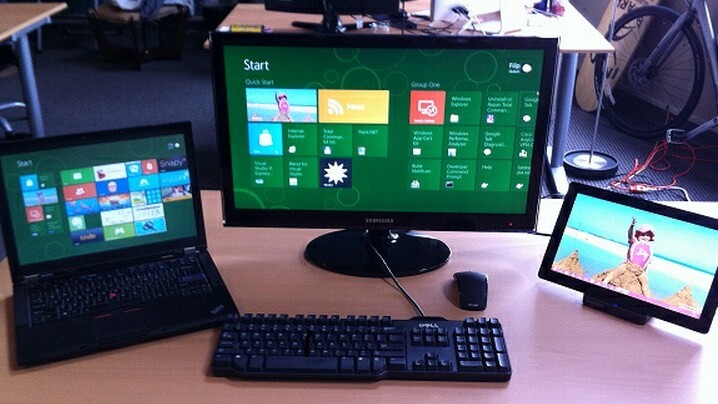
We’re going to keep this extremely brief, as this post is essentially an information dump. Today Microsoft announced the feature set for Windows 8 Enterprise, essentially explaining what volume and InTune customers will be able to buy, and how it differs from the consumer SKUs.
For more information on what flavors of Windows 8 you will be able to select between, head here. Here’s the meat of what Microsoft has released:
- Windows To Go is a fully manageable corporate Windows 8 desktop on a bootable external USB stick. This will allow IT organizations to support the “Bring Your Own PC” trend and businesses can give contingent staff access to the corporate environment without compromising security.
- DirectAccess allows remote users to seamlessly access resources inside a corporate network without having to launch a separate VPN and helps IT administrators keep remote users’ PCs in compliance by applying the latest policies, software updates, is easier to deploy, and it can be implemented with the existing IPv4 infrastructure.
- BranchCache allows users’ PCs to cache files, websites, and other content from central servers, so content is not repeatedly downloaded across the wide area network (WAN). When used with Windows Server 2012, Windows 8 brings several improvements to BranchCache to streamline the deployment process, optimize bandwidth over WAN connections and ensure better security and scalabilty.
- AppLocker can help mitigate issues by restricting the files and apps that users or groups are allowed to run.
- VDI enhancements: Enhancements in Microsoft RemoteFX and Windows Server 2012, provide users with a rich desktop experience with the ability to play 3D graphics, use USB peripherals and use touch-enabled devices across any type of network (LAN or WAN) for VDI scenarios.
- New Windows 8 App Deployment: Domain joined PCs and tablets running Windows 8 Enterprise will automatically be enabled to side-load internal, Windows 8 Metro style apps.
It’s getting hard to count how many SKUs Windows 8 will have, as it might depend on your perspective. Back of the envelope, this is what we have: Windows 8, Windows 8 Pro, Windows RT, and a build for the Chinese and other emerging markets. So that’s five. I think that that is the full list.
However, essentially, consumers will only have one choice: Pro or not, as RT will be on certain devices and not others, so it won’t be something that can be selected, effectively. Still, the Pro/not distinction is a good one. Home Premium was a simply horrific name, and one that I can’t believe made it into the market.
What I’m most curious about is how Microsoft will manage to explain Windows RT, and its app restrictions, to consumers. What sort of campaign will it employ?
Get the TNW newsletter
Get the most important tech news in your inbox each week.




